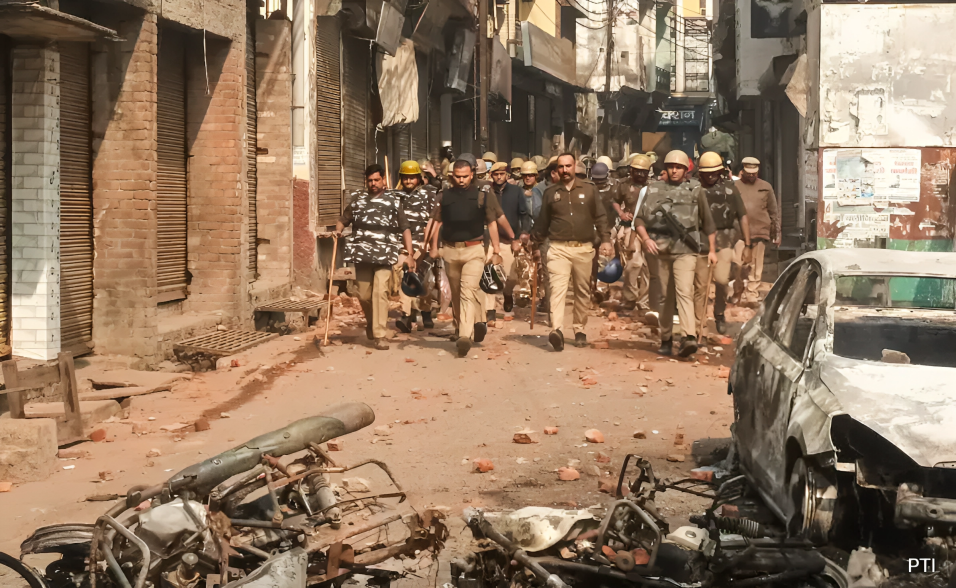Sambhal Violence

On November 24, 2024, protests during the Shahi Jama Masjid survey escalated into violence, involving stone-pelting and alleged gunfire from some individuals in the crowd. Police responded with tear gas and pellet guns to manage the unrest. The clashes led to five fatalities and injuries to both civilians and police. Investigations are ongoing to determine the exact causes and events behind the incident
Incident Overview:
- On November 24, 2024, violence erupted in Sambhal, Uttar Pradesh, linked to a court-ordered survey of the Shahi Jama Masjid, a historic 16th-century mosque. The survey was conducted following a petition claiming that Mughal emperor Babur demolished a Hindu temple to construct the mosque. The dispute over the mosque’s origins fueled significant tensions in the area, particularly among those advocating for the reconstruction of the alleged temple.
- The situation escalated dramatically when a mob began throwing stones at the police officers and the ASI (Archaeological Survey of India) team involved in the survey. This marked the beginning of violent clashes between the protestors and security forces.
Violence and Casualties:
- During the clashes, at least five people lost their lives, primarily due to firearm injuries. The reports indicated that the fatalities were caused by bullets fired from country-made pistols. These bullets were likely 315 bore bullets, commonly used in locally made firearms, and were fired from a very close range, suggesting that the attackers had a clear line of sight and were in close proximity to the victims.
- In addition to the fatalities, several others were injured, including a police officer. The severity of the situation led to public outrage and concerns over law and order in the region. Local authorities have also expressed concern that the clashes could lead to further violence in the days to come, especially with tensions remaining high in the region.
Investigation and Arrests:
- In response to the violence, seven FIRs were filed against over 2,500 individuals, including high-profile political figures such as Zia-ur-Rahman Barq, the Samajwadi Party (SP) MP, and Sohail Mahmood, the son of local MLA Iqbal Mahmood. The charges against them include inciting violence and provoking protestors.
- Authorities claim that Zia-ur-Rahman Barq was involved in instigating the crowd, which eventually led to the violence. It was reported that Barq’s statements may have led to an escalation, further inflaming the situation.
- In total, 25 suspects have been detained, and more individuals are being identified through drone footage and other surveillance methods. The police are working to identify and apprehend others involved in the violence.
- The authorities have also sealed the area around Jama Masjid and are conducting flag marches in nearby sensitive areas to deter any further protests or clashes.
Political Fallout:
- The violence has triggered political debates, with Akhilesh Yadav, the leader of the Samajwadi Party, accusing the government of trying to shift the focus from alleged electoral malpractice during the recent bypolls. Yadav criticized the FIRs filed against Zia-ur-Rahman Barq, suggesting that the MP was falsely implicated in the violence even though he was reportedly not in the district at the time of the incident.
- The Samajwadi Party claimed that the incident was orchestrated to distract from the ongoing bypolls, alleging that the government used the clashes as a political tool. Barq, who is a known political figure in the region, is under scrutiny due to his alleged role in mobilizing the protestors.
Security Measures:
- Following the clashes, the district authorities imposed strict security measures. Internet services in the region were suspended to prevent the spread of misinformation and to curb the potential for further violence. In addition, schools were closed to ensure the safety of students and prevent gatherings in the affected areas.
- Entry into the area has been restricted until December 1, with police forces monitoring all access points. A heavy police presence remains in Sambhal, especially around the Jama Masjid and other sensitive sites.
- The authorities have also launched a magisterial enquiry into the incident to understand the circumstances surrounding the violence and to identify any gaps in law enforcement or local governance that might have contributed to the escalation.
Ongoing Investigation:
- The investigation continues as the police gather evidence, including video footage from security cameras and drone surveillance. The authorities are focused on identifying the remaining individuals involved in the violence and bringing them to justice.
- The situation remains tense in Sambhal, and local authorities are keen on preventing any further incidents. The investigation is expected to provide a clearer picture of the events leading up to the violence and the roles played by various individuals, including political figures.
Conclusion:
The recent violence in Sambhal is a reminder that, in a democratic country like India, violence has no place. The Yogi Adityanath Government (Yogi’s UP Government) has strongly condemned the incidents and assured that those responsible will be arrested and brought to justice. Such acts of violence disrupt social harmony and threaten peace, and the government is taking necessary steps to ensure that all culprits are identified and punished promptly. Law enforcement agencies are actively investigating the incident, and the authorities have vowed to maintain peace and order in the region.
Practice Essay:
“Sambhal Violence: A Call for Accountability and Legal Action“